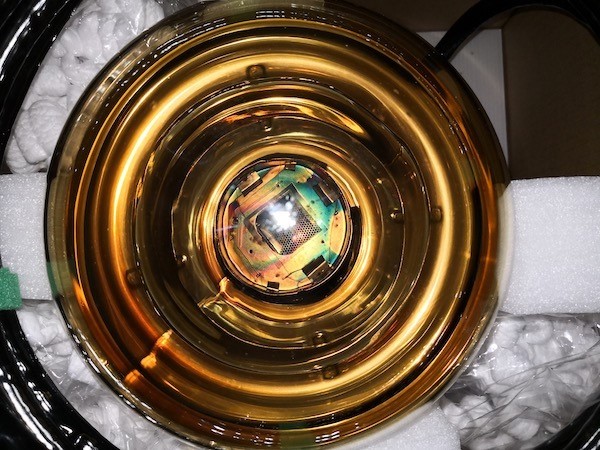
Cosmic rays, composed of subatomic particles, are charged and lose the direction information in propagating in the magnetic field in the interstellar medium, making it impossible to identify PeVatrons through direct cosmic ray measurement.
On the other hand, ultrahigh energy (UHE) γ-rays, falling in peta-electronvolt range, are produced unavoidably inside or in the vicinity of PeVatrons. γ-rays are not charged and travel straight, thus can be regarded as the straightforward signature to identify PeVatrons.
A recent study published in Nature reported that the Large High Altitude Air Shower Observatory (LHAASO) located at Sichuan, China, detected a dozen UHE gamma-ray sources, which opens a new window on the γ-ray sky, and indicates the existence of a population of PeVatrons in the Galaxy.
Though not fully installed, the half Kilometer Square Array (KM2A), one of the three interconnected detectors that constitute LHAASO, reported 12 PeVatrons using 11 months of the observational data. Two of these sources have been detected with the energy over 0.8 PeV, an energy equivilant to accelerate an electron with electric potential of 0.8 million billion electronvolts, and one with highest energy exceeded 1.4 PeV.
The 12 γ-ray emitting regions identified by LHAASO prompts the presence of active or recent PeVatrons. The research team led by Prof. YANG Ruizhi from the University of Science and Technology of China (USTC) of the Chinese Academy of Sciences discussed some possible candidates, including pulsar wind nebulae, supernova remnants and star-forming regions, with multi-wavelength data.
To support the detection of UHE γ-rays, Prof. LI Cheng's team from USTC made the design and quality assurance/check of over 3000 high-dynamic-range large-size photodetectors for muon detectors of KM2A and Water Cherenkov Detector Array (WCDA), another component of LHAASO.
With comprehensive multi-wavelength data, the researchers will be able to identify and locate PeVatrons. Longer observation period and full installation of LHAASO are expected to provide more detailed information on reported PeVatrons and to discover more PeVatrons, which advances the understanding of the origin of cosmic rays.
Discovered by Victor Hess in 1912, cosmic rays, relativisitic particles that shower Earth, contribute to a signicant part of the energy density in the universe and carry unambiguous informations on various astrophysical processes. The origin of cosmic rays is still a mystery, and a key problem is the searching for the acceleration site up to or even beyond UHE. Such extreme accelerators are dubbed as PeVatrons.

PMTs used in LHAASO. It converts light signals generated by secondary particles from extensive air showers of cosmic rays or γ-rays to electronic signals. (Image by State Key Laboratory of Particle Detection and Electronics)

86-10-68597521 (day)
86-10-68597289 (night)

86-10-68511095 (day)
86-10-68512458 (night)

cas_en@cas.cn

52 Sanlihe Rd., Xicheng District,
Beijing, China (100864)

